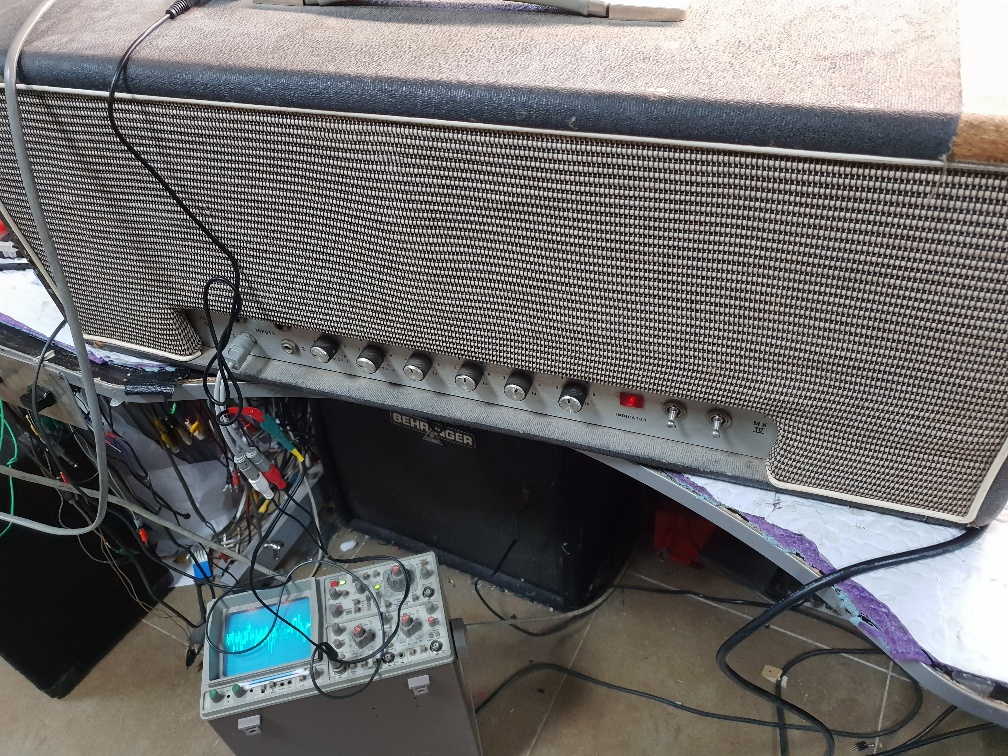Just to set the scene. A warmer than average day for this time of year, a nice bag of oranges brought in by a customer, wild animals jumping twix palm tees, the odd shooting outside over drug dealing territory, just another day in the quaint Zurgena village. Then… my main man, Mario the guitarist came in with a London City DA100 and its a MK5! These amps are blatant Marshall 100 Watt copies. Made in Holland, early ‘70s. Mario had been a very naughty boy and robbed it of all valves. Here in Spain, this act is still punishable by firing squad. If Franco was still around, he would have come down to the shop in person. After applying electrodes to Mario, he agreed to have the amp restored to order. 3 x 12AX7s and 4 x Lovely new EL34s, we wound the thing up slowly on the Variac, as it had not been used for several years. Horrible cross-over distortion was seen, so out with the chassis. Grid bias pot was bad, so replaced it and set thing up for full output and a tad under the cathode current for good measure. Now these amps have the typical Marshall high gain input. Designed to make a nice guitar, sound like a chainsaw. Sorry, I am a saxophonist and therefore a purist. However this channel went mad. A massive screech, causing the output stage to draw all of Spain’s power reserve and removing the enamel from my front teeth. Inspection of the tag strip showed that some work had been done in the past. One capdensor in the preamp stage was totally in correct type, so changed. Then noticed that wandering a finger around various components caused all sorts. Right, a little focus on replacing capdensors for those who will do this in the future; We know electrolytics have a voltage polarity. Get that wrong and we end up with tears and tantrums. But we must be mindful when replacing coupling and decoupling capacitors (tubular film types). These too have a sort of polarity. I won’t go into detail here, but the wire from one connects to the aluminum foil on the inside, the other wire connects to the outer foil. Having the outer foil connecting to a high impedance inputs of a preamp stages and tone control networks can cause pickup, positive feedback and all kinds of stuff. If these lay against the chassis or anode resistors with quite a high signal content, odd things happen. Rewiring some of these caps put this amp into good working order. If anyone wants advice on this sort of thing, just ask. I never hold knowledge close to the chest, unless you set up shop next door. In which case I will show you my trophies for 9 mm shooting skills. This amp sounded lovely, deserving a space in a HiFi set up. I got so excited I had to set up the distortion meter and was placed in a happy state for the remaining of the day.
London City DEA100 Mk5!!



